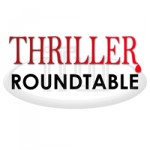

March 25 – 31: “How do you add realism to your dialogue?”
 This week, we talk dialogue. ITW Members Mick Sims, Neil Plakcy, Alan L. Moss, Erin Hart, Barbara Taylor Sissel, Owen Fitzstephen and J.H. Bográn ponder the question, “How do you add realism to your dialogue?”
This week, we talk dialogue. ITW Members Mick Sims, Neil Plakcy, Alan L. Moss, Erin Hart, Barbara Taylor Sissel, Owen Fitzstephen and J.H. Bográn ponder the question, “How do you add realism to your dialogue?”
~~~~~
 Alan L. Moss is a unique and emerging voice in the thriller genre. His writing draws upon Ph. D. research capabilities and many years in Washington D.C. as a federal Chief Economist, Congressional Fellow in the U.S. Senate, and Adjunct Instructor at the University of Virginia’s Northern Virginia Center. In 2002, he put his government career aside and moved to the Jersey Shore to pursue his writing. His published novels spin sophisticated tales of conspiracy, love, sex, and subterfuge. After years of politics and bureaucracy, Alan has found the freedom of writing fiction an intoxicating and satisfying calling.
Alan L. Moss is a unique and emerging voice in the thriller genre. His writing draws upon Ph. D. research capabilities and many years in Washington D.C. as a federal Chief Economist, Congressional Fellow in the U.S. Senate, and Adjunct Instructor at the University of Virginia’s Northern Virginia Center. In 2002, he put his government career aside and moved to the Jersey Shore to pursue his writing. His published novels spin sophisticated tales of conspiracy, love, sex, and subterfuge. After years of politics and bureaucracy, Alan has found the freedom of writing fiction an intoxicating and satisfying calling.
 Neil Plakcy is the author of the Mahu Investigations, about openly gay Honolulu homicide detective Kimo Kanapa’aka, as well as the Have Body, Will Guard adventure romance series and the Golden Retriever Mysteries. He is an assistant professor of English at Broward College in South Florida, and former president of the Florida chapter of Mystery Writers of America.
Neil Plakcy is the author of the Mahu Investigations, about openly gay Honolulu homicide detective Kimo Kanapa’aka, as well as the Have Body, Will Guard adventure romance series and the Golden Retriever Mysteries. He is an assistant professor of English at Broward College in South Florida, and former president of the Florida chapter of Mystery Writers of America.
 Erin Hart’s archaeological crime novels are set in the mysterious Irish bogs. HAUNTED GROUND (2003), was shortlisted for Anthony and Agatha awards; LAKE OF SORROWS (2004) was a Minnesota Book Award finalist; FALSE MERMAID (2010) made ALA/Booklist’s Top Ten Crime Novels of 2010. THE BOOK OF KILLOWEN will be published in March 2013.
Erin Hart’s archaeological crime novels are set in the mysterious Irish bogs. HAUNTED GROUND (2003), was shortlisted for Anthony and Agatha awards; LAKE OF SORROWS (2004) was a Minnesota Book Award finalist; FALSE MERMAID (2010) made ALA/Booklist’s Top Ten Crime Novels of 2010. THE BOOK OF KILLOWEN will be published in March 2013.
 Len Maynard & Mick Sims, Maynard Sims, are authors of six novels, four novellas eight collections. DARK OF THE SUN is their first non-supernatural thriller, but not their last. It has its own website. It features a hero who is quite happy with his lot in life in the Bahamas. Then people start getting killed, and his life is turned upside down and he is dragged into an underworld of intrigue and danger.
Len Maynard & Mick Sims, Maynard Sims, are authors of six novels, four novellas eight collections. DARK OF THE SUN is their first non-supernatural thriller, but not their last. It has its own website. It features a hero who is quite happy with his lot in life in the Bahamas. Then people start getting killed, and his life is turned upside down and he is dragged into an underworld of intrigue and danger.
 J. H. Bográn, born and raised in Honduras, is the son of a journalist. He ironically prefers to write fiction rather than fact. José’s genre of choice is thrillers, but he likes to throw in a twist of romance into the mix. His works include novels and short stories in both English and Spanish. He’s a member of the International Thriller Writers where he also serves as the Thriller Roundtable Coordinator. You can find him on Twitter @JHBogran, Facebook and Blogger.
J. H. Bográn, born and raised in Honduras, is the son of a journalist. He ironically prefers to write fiction rather than fact. José’s genre of choice is thrillers, but he likes to throw in a twist of romance into the mix. His works include novels and short stories in both English and Spanish. He’s a member of the International Thriller Writers where he also serves as the Thriller Roundtable Coordinator. You can find him on Twitter @JHBogran, Facebook and Blogger.
 Owen Fitzstephen is the author of numerous novels as well as a middle-grade trilogy, THE MISADVENTURES OF EDGAR AND ALLAN POE. Additionally, he is co-author of the non-fiction book, THE WAY OF BASEBALL, FINDING STILLNESS AT 95 MPH. He has taught creative writing and literature at U.C. Irvine, U.C.L.A. and Chapman University. He lives with his wife Julie in southern California.
Owen Fitzstephen is the author of numerous novels as well as a middle-grade trilogy, THE MISADVENTURES OF EDGAR AND ALLAN POE. Additionally, he is co-author of the non-fiction book, THE WAY OF BASEBALL, FINDING STILLNESS AT 95 MPH. He has taught creative writing and literature at U.C. Irvine, U.C.L.A. and Chapman University. He lives with his wife Julie in southern California.
 Barbara Taylor Sissel is the author of three indie novels. EVIDENCE OF LIFE is her national print debut. The mother of two sons, Barbara lives near Houston, Texas.
Barbara Taylor Sissel is the author of three indie novels. EVIDENCE OF LIFE is her national print debut. The mother of two sons, Barbara lives near Houston, Texas.
- LAST GIRL MISSING with K.L. Murphy - July 25, 2024
- CHILD OF DUST with Yigal Zur - July 25, 2024
- THE RAVENWOOD CONSPIRACY with Michael Siverling - July 19, 2024
